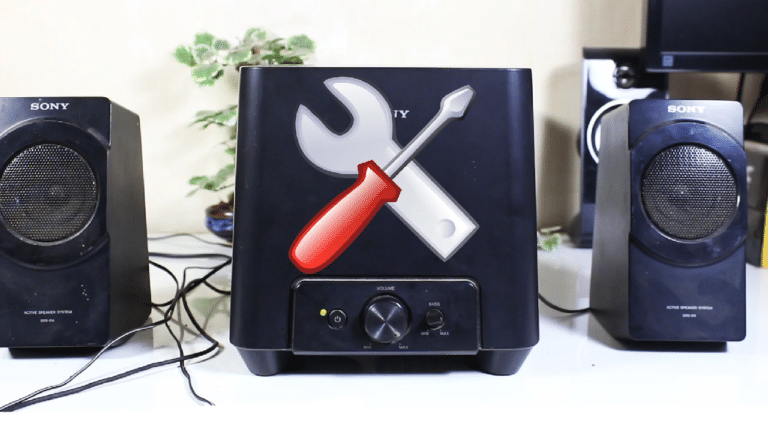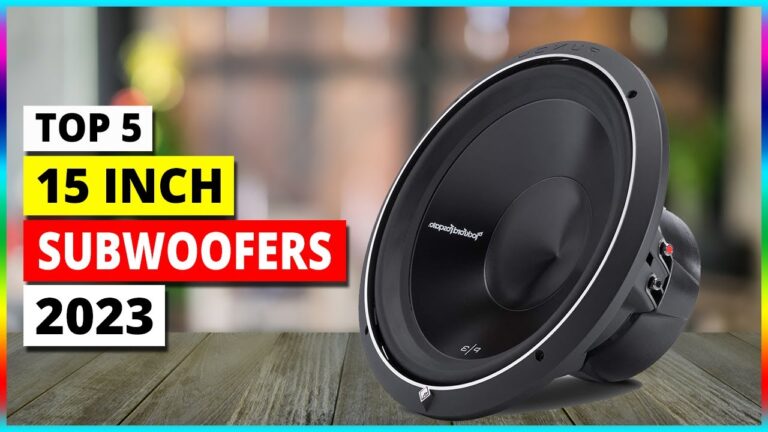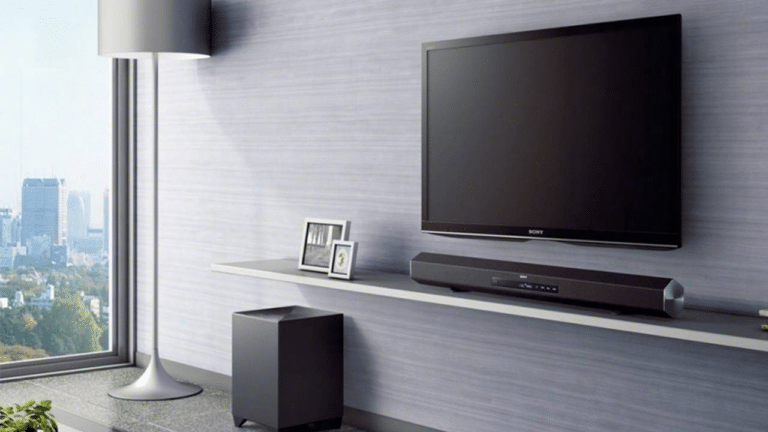Music is an important part of everyone’s lives, and sound reproduction is key to enjoying it. That’s where subwoofers come in; they help to improve the quality of music by increasing the bass output. If you’re wondering what a subwoofer is and why you might need one, read on for a comprehensive guide. By the end, you should have a better understanding of what this device is and why you might want to consider investing in one for your home theater or music-listening needs.
What is a Subwoofer?
A subwoofer is a type of speaker that helps to create bass frequencies in a stereo system. It is often used in home theaters and music-listening situations where a deep, booming sound is desired. A subwoofer can be placed anywhere in the room, depending on your specific needs.
It’s basically a big box that goes below the floor of your car or home theater, and it uses vibrations to create deep bass. You don’t need one if you have a good sound system, but many people think they’re worth the extra money because they make movies and music sound much better.
Why Do I Need One?
When it comes to audio, size definitely matters! That’s why it’s important to know what a subwoofer is and why you might need one in your home theatre system.
A subwoofer is a small, but powerful speaker that helps to add depth and bass richness to your audio experience. In fact, a good subwoofer can make a huge difference in the sound quality of your movies and music.
If you’re thinking about adding a subwoofer to your home theatre system, here are five reasons why you should consider doing so:
1) Subwoofers add depth and bass richness: A good subwoofer can really bring out the low notes in your music or movies. This means that sounds like footsteps or gunshots will sound much more realistic than they would without a subwoofer.
2) Subwoofers help to improve overall sound quality: Not only do they boost the bass levels, but subs also help to improve the overall clarity of the sound. This is especially important if you have speakers that don’t fare too well when it comes to low frequencies.
3) Subwoofers can fill in gaps in an HT system: If you have an HT system that doesn’t have enough power to handle big movie explosions or thunderous drums, a subwoofer can help bridge the gap.
4) Subwoofers are great for home theatres with limited space: Oftentimes, smaller HT systems struggle to produce deep bass sounds. A subwoofer can help to fill in these gaps and improve the sound quality of your system overall.
5) Subwoofers can be used with a variety of music types: Not every type of music needs to be played through a subwoofer in order to benefit from its added depth and bass. In fact, many people use subs with genres like country or rock music without any issues.
If you’re thinking about adding a subwoofer to your home the.atre or music-listening setup, it’s important to understand what they are and why you might need one. By the end of this guide, you should have a better understanding of what a subwoofer is and why you might want to consider investing in one for your home theatre or music-listening needs.
What are the different types of subwoofers?
There are two types of subwoofers, passive and powered.
-
Passive Subwoofers
Passive subwoofers are also known as unpowered subwoofers. They do not have a built-in amplifier, which means they require an external amplifier to function. Passive subwoofers are usually less expensive than powered subwoofers. However, they require additional equipment and wiring to set up.
-
Powered Subwoofers
Powered subwoofers, also known as active subwoofers, have an internal amplifier that powers the speaker. They only require a power source and an audio signal to function. Powered subwoofers are easier to set up and can be used in smaller spaces. However, they are generally more expensive than passive subwoofers.
In summary, both types of subwoofers have their advantages and disadvantages. The choice between a passive or powered subwoofer depends on personal preference and the specific requirements of the sound system.
Which is Better for Small Rooms: Passive or Active Subwoofers?
If you have a small room and you’re looking for a subwoofer, the decision between passive and active subwoofers can be daunting. However, according to experts, a passive subwoofer is generally the better choice for small rooms where space is a concern.
Passive subwoofers are typically smaller and less bulky than active subwoofers, making them a better fit for tight spaces. They also don’t require a built-in amplifier, which can save space and reduce costs. However, they do require a separate amplifier to power them, which can add to the complexity of your setup.
In addition, passive subwoofers are ideal if you don’t need a more powerful sound. They produce a less intense sound than active subwoofers, which may not be ideal for larger rooms or for those who crave powerful bass.
Overall, if you have a small room and you’re looking for a subwoofer, a passive subwoofer is likely the better bet due to its smaller size and cost-effectiveness. However, if you need a more powerful sound or have a larger room, an active subwoofer may be a better option.
How to Choose the Right Subwoofer for You
So you’ve decided to add a subwoofer to your music-listening experience, but don’t know where to start? Here are four tips for choosing the right subwoofer for you: We have a specific article about the best Sony wireless subwoofer that you can buy.
1. Size Matters
The first step in choosing the right subwoofer is determining how large of a room you will be using it in. Subwoofers come in all different sizes, from tiny under-shelves that fit on a desk to full-blown floor-standing models that take up an entire corner of your room. It’s important to select the size of the subwoofer based on the space you have available, as not all models are designed for every size room.
2. Budget Is Key
Another factor to consider when choosing a subwoofer is your budget. While there are some high-end models that are very expensive, there are also many affordable options available. Just be sure to read reviews and compare prices before making a purchase so you don’t end up spending more than you need to.
3. Speaker Type And Configuration Matters
Your next step is deciding what type of speaker system you will be using your new subwoofer with. Most subs come equipped with either an individual speaker or a pair of speakers hooked together like in a stereo system. If your goal is to upgrade or replace just one speaker in your existing audio system, then an individual subwoofer will probably suffice. If, on the other hand, you want to add a subwoofer to your entire audio system, then you will need to purchase a pair of speakers designed specifically for subwoofer use.
4. Sound Quality Is Important Too
Last but not least, sound quality is an important factor to consider when choosing a subwoofer. Make sure to listen to different models and read reviews before making your purchase, so you can find one that will provide the bass sound you are looking for.
With these tips in mind, you are ready to start shopping for the right subwoofer for you!
How Much Does A Subwoofer Cost?
A subwoofer is a device that helps to add bass to a system. It is an important part of any home theatre, car audio, or music system. A subwoofer can be small or large, and it can cost anywhere from $100 to $5,000.
There are many factors that affect the cost of a subwoofer. The size and power of the unit, the type of enclosure (box or cabinet), and the features (such as voice coil wound motor or multiple drivers) all contribute to the price.
How to Optimize Your Subwoofer Sound?
If you are looking to improve the sound quality of your subwoofer, there are a few steps you can take to get the most out of your audio system. Here’s a step-by-step guide to improving your subwoofer sound:
- Find the optimal location To start, find the best location for your subwoofer. For optimal quality sound, place your subwoofer within 8-12 inches of a wall, facing outwards towards the rest of the room. This helps to ensure that the sound waves from the subwoofer are properly distributed throughout the room.
- Consider corner placement If you are looking for even more output, consider placing your subwoofer in the corner of your room. This can significantly increase the overall sound due to the positioning. However, be aware that this may not work in every room, so experiment with different locations to find the best spot.
- Adjust the crossover settings Adjust the crossover settings on your subwoofer to ensure that it is working in conjunction with your other speakers. This helps to ensure that the sound is properly balanced and not overpowering other frequencies.
- Adjust the volume Adjust the volume on your subwoofer to the desired level. Remember that you want the bass to be present, but not overwhelming. Experiment with different levels until you find the perfect balance.
- Fine-tune with an equalizer If you have an equalizer, use it to fine-tune the sound of your subwoofer. This allows you to adjust the levels of different frequencies and create a custom sound that works best for your specific room and preferences.
By following these steps, you can improve the sound quality of your subwoofer and get the most out of your audio system.
What is a subwoofer vs speaker?
Are you in possession of a pair of speakers and are wondering whether you need to add subwoofers to your setup? Perhaps you think that these components are almost the same and can be used interchangeably. It is true that both speakers and subwoofers reproduce audio when connected to a receiver, but there are some key differences that you need to be aware of.
The primary difference between subwoofers and speakers is in the frequency range that they are designed to handle. Subwoofers are specifically engineered to cater to lower frequencies, also known as sub-bass response, while speakers focus on mid and high-range frequencies.
Aside from the differences in their frequency ranges, there are other notable features that distinguish subwoofers from speakers.
The Key Differences Between Subwoofers and Speakers
While both subwoofers and speakers produce audio, they are fundamentally dissimilar. Regular speakers are not equipped to handle music with a lot of bass and sub-bass, as they are designed to focus on mid and high-range frequencies. This makes them suitable for use in computers and televisions, where vocal audio is the primary concern. However, when it comes to listening to music, you will notice that lower frequencies are missing.
If you want to hear lower frequencies, adding a subwoofer to your setup is a must. Subwoofers are designed to produce deep bass exclusively, which is a prominent feature in most music genres. Check out our tutorial for more information on the different types of subwoofers. Note that while speakers can function without a subwoofer, subs cannot function without speakers.
Subwoofers
The sole purpose of a subwoofer is to produce lower frequencies, and the frequency range of a subwoofer typically depends on its price. In one of our other articles, we delve into the different types of subwoofers available. Professional subwoofers come with a higher price tag but have a frequency range of 100Hz or less, while less expensive subs typically range from 20Hz to 200Hz, which is sufficient for most music genres.
Visit… . . . for more information on audio components
Conclusion
If you’re reading this, it’s likely that you’re looking to add some depth and power to your music experience. Maybe you just upgraded to a new car and want to experience the full range of sound frequencies available, or maybe you’re living in a smaller space and need an adequate way to fill it with sound. Whatever the case may be, a subwoofer is an essential piece of audio equipment for anyone who wants quality sound reproduction. In this article, we’ll cover what a subwoofer is, what different types are available on the market today, and how to choose the best one for your needs.






